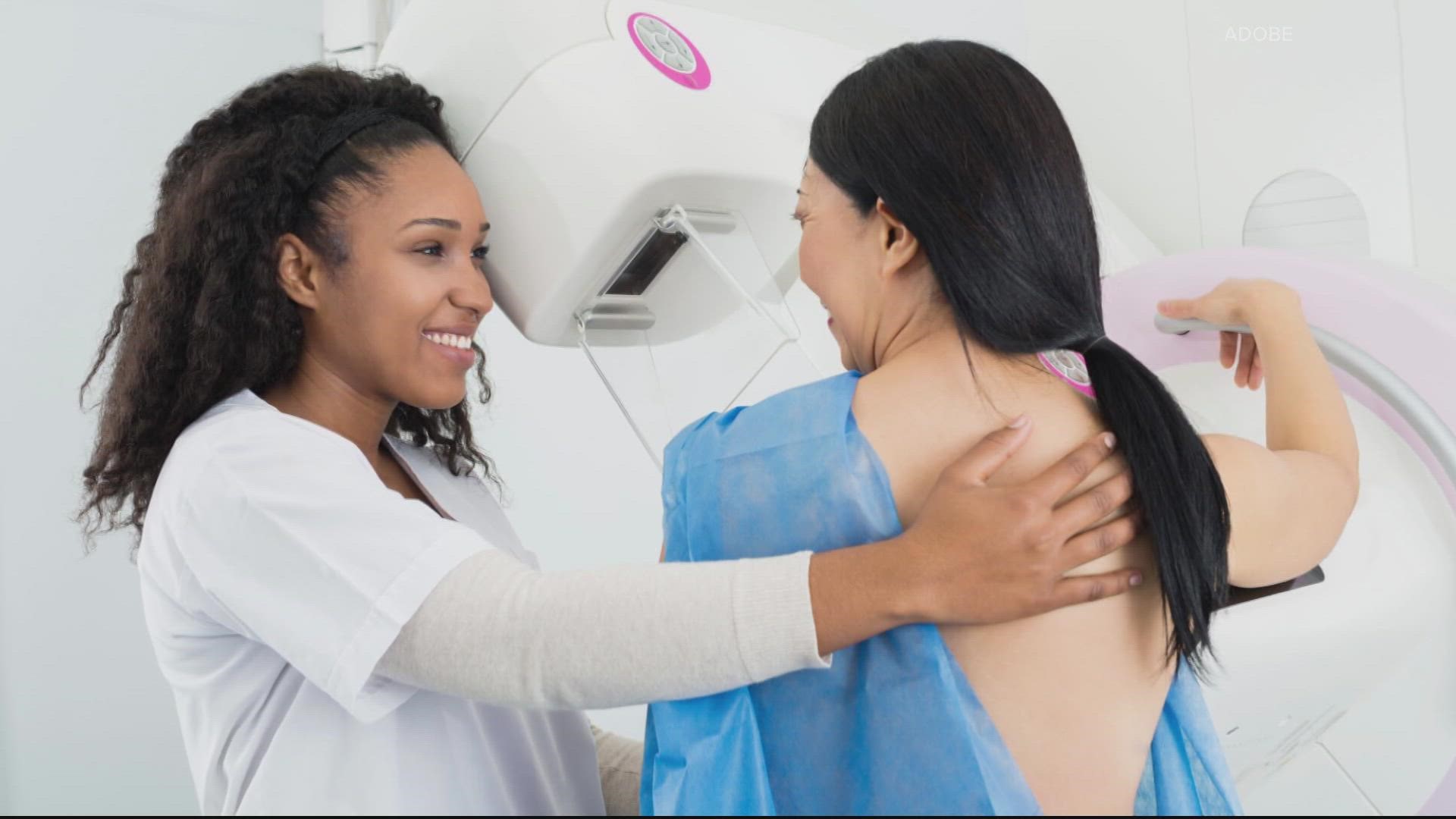WASHINGTON — October is Breast Cancer Awareness Month – it’s the most common cancer among American women, so chances are you’re aware of the disease. So let’s talk about how to recognize it and the guidance for breast cancer screening.
THE QUESTION:
What’s the guidance for how to detect it, and monitor your breast health?
THE SOURCES:
RELATED: 'It's very empowering' | New cancer clinic helps women assess risk of developing breast cancer
THE ANSWER:
It depends who you ask–but the most important conversation could be with your doctor’s office.
WHAT WE FOUND:
You’ll hear the phrase “early detection saves lives.” That’s because doctors will widely agree, finding can make a huge difference in breast cancer treatment and outcomes.
A screening is checking for a disease before any signs or symptoms: for breast cancer, that typically means physical exams and mammograms. (Note – breast cancer can happen in men, but it’s far less common…so general screening guidance is for those assigned female at birth.)
Authorities on breast cancer treatment and research may share their own medical recommendations for screenings, such as the National Comprehensive Cancer Network, the CDC, and the American Cancer Society, and the National Breast Cancer Foundation.
However, “There are different guidelines from different groups,” said Dr. Claudine Isaacs, an oncologist specializing in breast cancer at MedStar health.
She explains, especially with mammograms, it's hard to come up with a one-size fits all approach.
"The [issue] is really the the false positives that then cause understandable anxiety or unnecessary other procedures, and sometimes turns people off from coming back for their subsequent imaging too," she said. "So that's why there's this big debate about that, when to start, and the frequency of it."
Some of these leading breast cancer organizations will recommend mammograms beginning at 40, 45, or 50. Those at highest risk might be encouraged to get a mammogram even earlier. The scan may be recommend annually; others say it is only necessary every other year.
“What we're really trying to do is to figure out how to get more personalized at this, to be able to use much more sensitive tools to figure out who is really at lower risk and can do these things less often, and who is at higher risk,” said Dr. Isaacs.
Along with age, family history and ancestry, inherited gene mutations, personal health history, and lifestyle factors are all among the factors determining when, how often, and what type of screenings should happen. The National Comprehensive Cancer Network recommends people have a breast cancer risk assessment, which involves exploring these risk factors, by age 25.
In conjunction with regular well-woman visits with a healthcare provider, the advice has long-been to conduct monthly breast self exams. Now, guidance on that is divided, too. The American Cancer Society no longer recommends it, but the National Breast Cancer Foundation still advises it on its website.
Dr. Isaacs says it’s most important to pay attention to your body, and recognize lumps, bumps, changes in texture or shape, nipple discharge, or pain.
“I think what is important that people know what their breasts feel like,” she said. “If they notice something different, they have it checked out.”
She adds: the best guidance for you will come from the healthcare providers who know you best.
“Those are conversations that have to happen on a regular basis, because the great thing about medicine is that our knowledge keeps on evolving, and our guidelines change as a result,” she said. “So because you had that discussion 10 years ago, doesn't mean that it still applies to today.”

